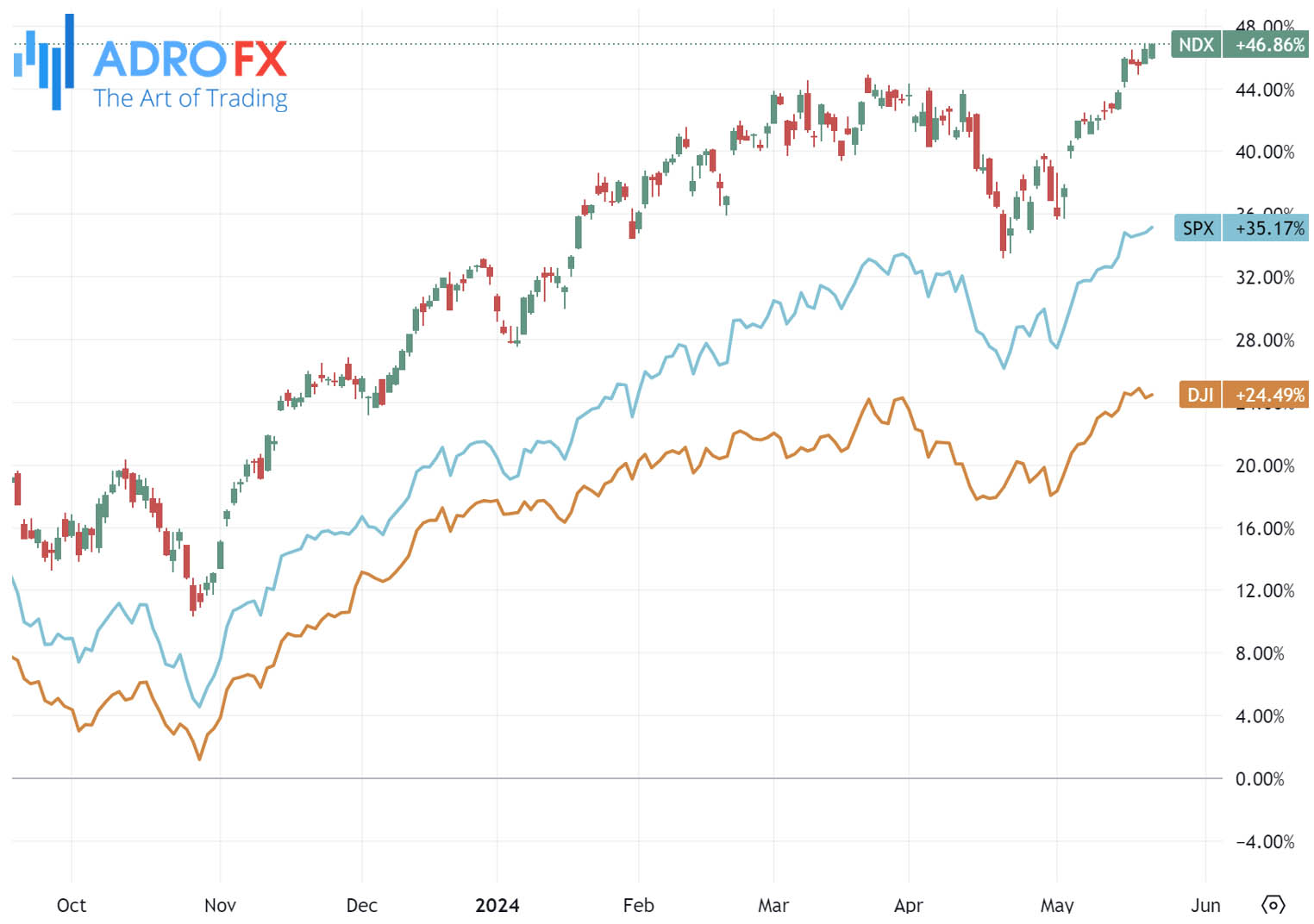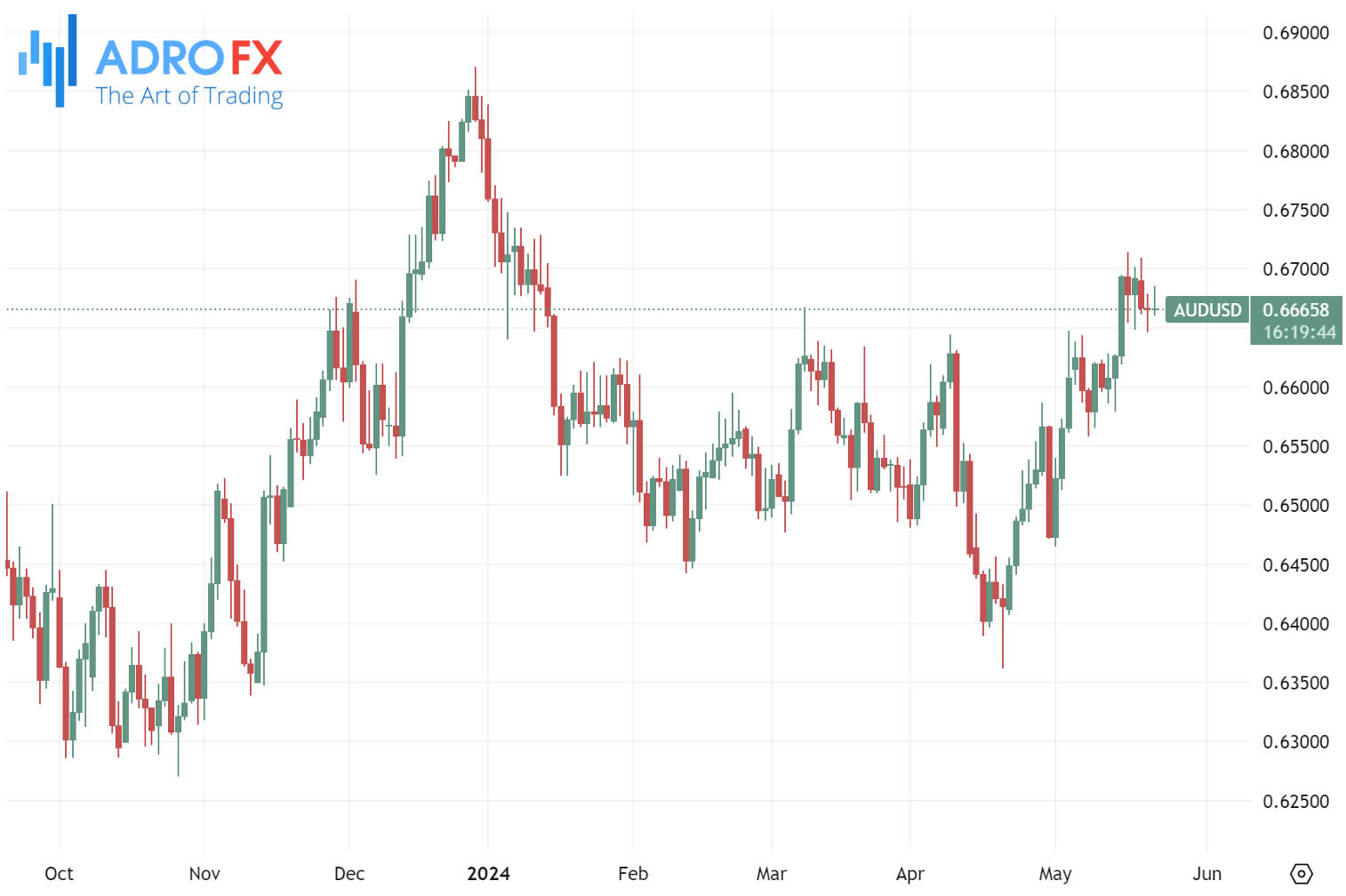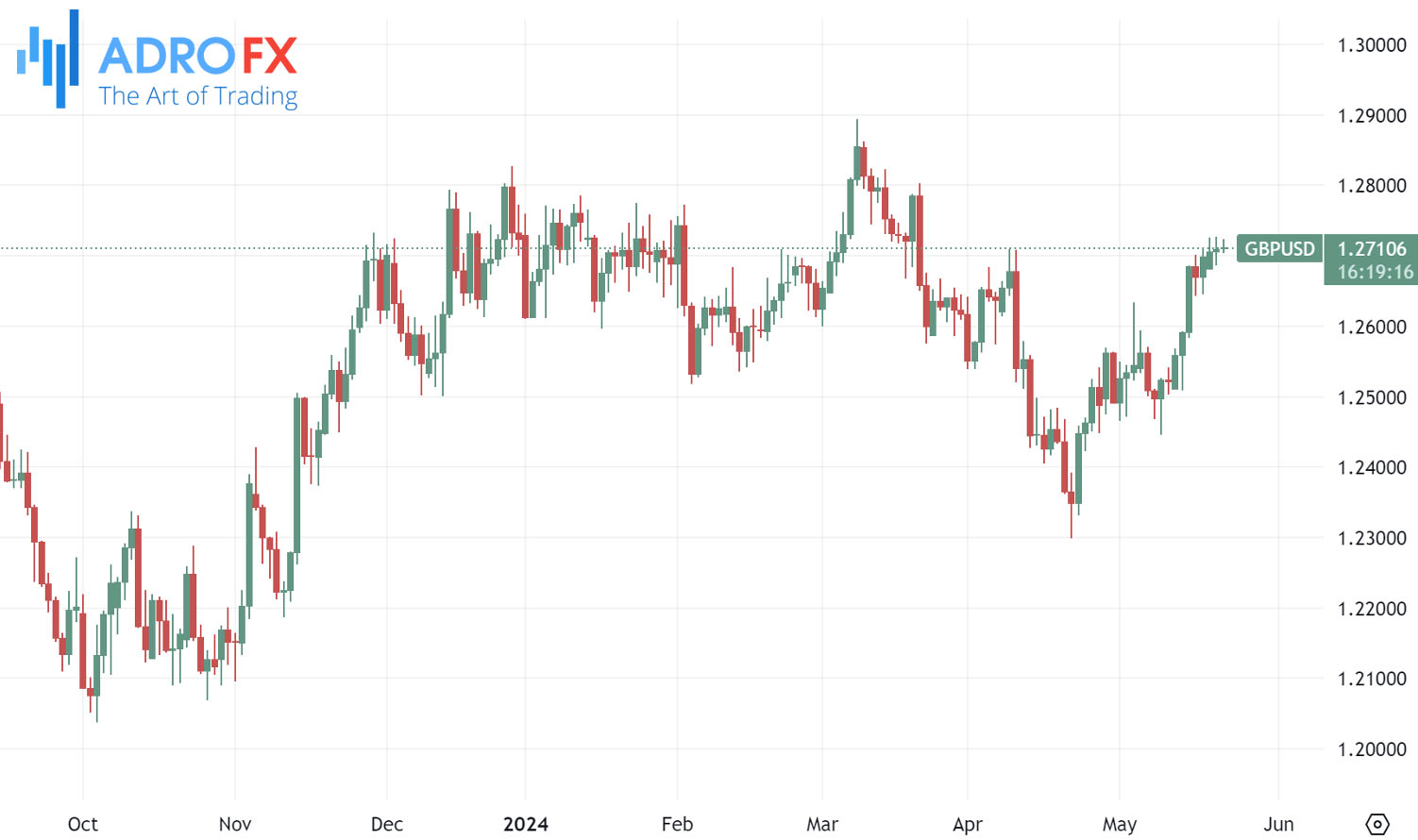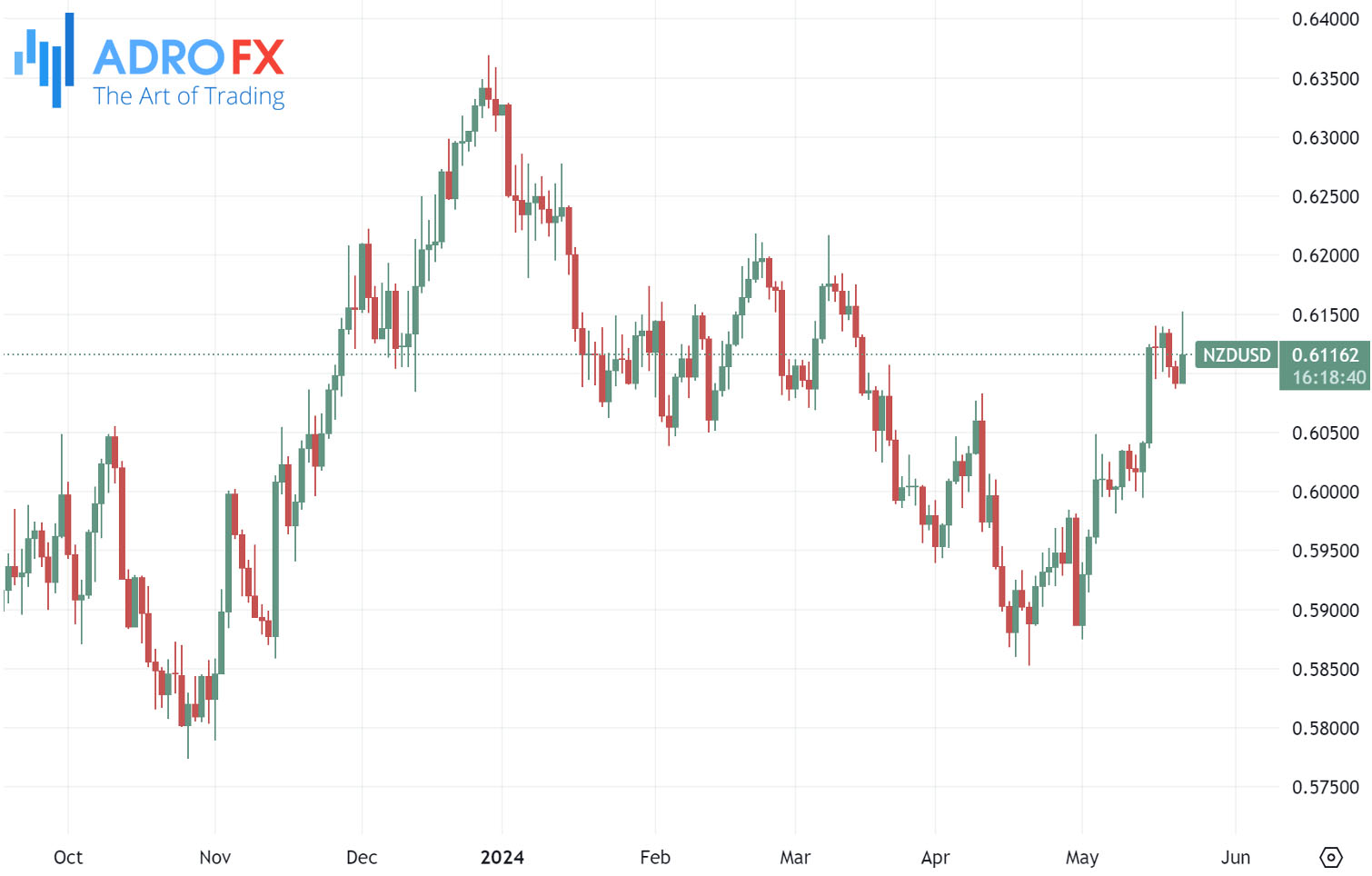Markets Rally with Record Highs as Investors Eye Key Earnings and Inflation Data | Daily Market Analysis

Key events:
- New Zealand - RBNZ Interest Rate Decision
- UK - CPI (YoY) (Apr)
- USA - Existing Home Sales (Apr)
- USA - Crude Oil Inventories
- USA - FOMC Meeting Minutes
The S&P 500 and Nasdaq reached record highs on Tuesday, as investors capitalized on a dip in tech stocks ahead of Nvidia's highly anticipated earnings report due Wednesday. The Dow Jones Industrial Average climbed 66 points, or 0.2%, while the S&P 500 increased by 0.3%, and the Nasdaq Composite rose by 0.2%.

The EUR/USD remained steady ahead of the release of the Federal Open Market Committee meeting minutes from May 1, scheduled for Wednesday. The pair traded around 1.0850 during the Asian session.
The Federal Reserve continues to adopt a cautious stance on inflation and potential rate cuts in 2024. At the event "Central Banking in the Post-Pandemic Financial System" on Wednesday, Federal Reserve Bank of Boston President Susan Collins highlighted the extended timeline required for interest rate adjustments and emphasized patience as the appropriate policy for the Fed.
Financial markets are forecasting the first interest rate cut to occur in September at the earliest, with expectations of two quarter-point reductions before the year's end. According to the CME FedWatch Tool, the likelihood of the Federal Reserve implementing a 25 basis-point rate cut in September has increased slightly to 50.3%, up from 49.6% the previous day.
In the Eurozone, Eurostat reported a trade surplus of €24.1 billion in March, an increase from February's €22.8 billion and exceeding market expectations of €19.9 billion. This is the largest trade surplus since December 2020.

Uncertainty over the European Central Bank extending the rate-cut cycle beyond June has grown, which has supported the Euro. Although ECB policymakers are open to lowering the central bank's three key interest rates starting in June, they remain hesitant to commit to a longer-term rate path and prefer to rely on data-dependent decisions.
The Australian Dollar rebounded on Wednesday, reversing its recent losses, following a boost in the New Zealand Dollar after the Reserve Bank of New Zealand decided to keep its Official Cash Rate (OCR) steady at 5.5%. The close economic and trade ties between Australia and New Zealand often result in the two currencies moving in tandem.

Investors are closely monitoring the Reserve Bank of Australia’s monetary policy outlook. The RBA Meeting Minutes released on Tuesday revealed that the board had considered raising rates in May but ultimately opted to maintain the current policy. Policymakers highlighted the challenges in definitively ruling out future changes in the cash rate.
Australia’s inflation rate for the first quarter stood at 3.6% year-over-year, down from 4.1% previously but still above the market expectation of 3.4%. This suggests an increase in inflationary pressures, as noted in the RBA’s May policy meeting minutes, prompting the bank to revisit the possibility of an interest rate hike.
The United Kingdom’s Office for National Statistics (ONS) is set to release the high-impact CPI data on Wednesday at 06:00 GMT.
The UK CPI inflation report is anticipated to show a significant decline in inflation, which could heighten expectations for an interest rate cut by the Bank of England in June, potentially causing notable volatility for the Pound Sterling.

Core CPI inflation is projected to decrease to 3.6% year-over-year in April from 4.2% in March, indicating a sharp slowdown. Meanwhile, the British monthly CPI is expected to rise by 0.2% during the same period, compared to the previous increase of 0.6%.
The significant deceleration in UK inflation is largely attributed to a notable reduction in the Ofgem energy price cap. Economists also predict that services inflation, one of the most persistent components of price growth and a concern for many policymakers, will drop to 5.4% year-over-year in April, down from 6.0% in March.
A larger-than-expected decline in headline annual inflation and services inflation could solidify expectations for a rate cut by the Bank of England in June. Currently, money markets are pricing in a 60% chance that the UK central bank will reduce borrowing costs next month.
Following its May policy meeting, the BoE kept interest rates at a 16-year high of 5.25%, with a split decision as two members favored a 25 basis point (bps) rate cut to 5%.
However, BoE Governor Andrew Bailey stated during his post-policy meeting press conference that "we are not yet at a point where we can cut the base rate." Regarding the potential for a June rate cut, he mentioned that there are still two more inflation reports to be released before that meeting.
The NZD/USD pair recovered after two days of losses, trading around 0.6140 during Asian hours on Wednesday, following the RBNZ’s decision to hold the OCR at 5.5% for the seventh consecutive meeting due to sustained high inflation, which remains above the 1-3% target range.

In the first quarter, New Zealand’s annual CPI fell to 4.0%, down from the previous reading of 4.7%, marking the lowest rate since the second quarter of 2021. This decline has spurred speculation that the RBNZ might consider rate cuts later in 2024.








